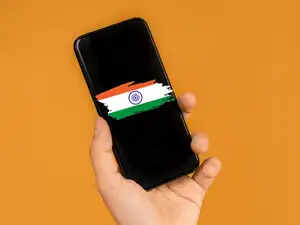Chinese Phone Manufacturing In India: Chinese Smartphones Manufactured in India Gain Traction in Global Markets, ET Manufacturing
This marks a notable shift in strategy for Chinese brands operating in India, which had so far focused largely on the domestic market. The change comes amid increased government scrutiny of Chinese firms after the border conflicts with China in 2020 and persistent nudging of Chinese companies.

Chinese smartphone and electronic companies have started exporting from India to West Asia, Africa and even to the United States —markets long served almost exclusively from China and Vietnam— amid sustained government nudging and expanding local manufacturing capacities.
Oppo Mobiles India for the first time earned foreign exchange of ₹272 crore in FY24 from exports, while Realme Mobile Telecommunications (India) earned ₹114 crore, according to their regulatory filings submitted to the Registrar of Companies (RoC) on May 12.
The companies are yet to file their financial results for FY25.
One of the largest Chinese brands selling televisions and home appliances, Hisense Group, plans to start exporting locally produced goods to West Asia and Africa from early next year.
This marks a notable shift in strategy for Chinese brands operating in India, which had so far focused largely on the domestic market. The change comes amid increased government scrutiny of Chinese firms after the border conflicts with China in 2020 and persistent nudging of Chinese companies.
Chinese companies have been told in informal forums to localise manufacturing in partnership with Indian firms, build locally owned distribution, export, and appoint Indians in senior management and boards, people familiar with the matter said.
Ajay Singhania, managing director of Hisense’s local manufacturing partner Epack Durable, told analysts earlier this month that the company is setting up a ₹100-crore plant in Sri City for Hisense, which will also undertake exports. The plant will replicate the “designs and everything done” in Hisense’s China facility, he said.
Lenovo Group has also lined up exports of servers and laptops from India, even as its smartphone arm Motorola already exports devices to the US. Motorola phones are manufactured by Dixon Technologies, which is now expanding its capacity by 50% to meet growing export demand, the company told analysts last month.
Dixon also manufactures smartphones for Chinese firm Transsion Holdings — the maker of Itel, Tecno and Infinix brands — which has started exporting to Africa.
Consumer electronics and appliances major Haier is also exploring export opportunities, industry insiders said.
Smartphone brands like Oppo, Vivo, Realme, OnePlus and Xiaomi are now partnering with Indian businesses and some have started exports. RoC filings of Xiaomi, Midea and OnePlus for FY24, though, did not show foreign exchange earnings through exports.
However, none of the Chinese firms operating in India have so far appointed Indian nationals as managing directors or chief executives.
Some of these export initiatives are supported by India’s production-linked incentive (PLI) scheme. While most Chinese brands are not part of PLI, some of their contract manufacturers like Dixon are beneficiaries of the scheme.
A promoter of a leading third-party manufacturing company said it has been a long time ask of the government to the Chinese companies to export from India. “Even the rest (of Chines brands) who are yet to start (exports) will start soon,” he said, requesting anonymity.
The need for supply chain diversion amid rising geopolitical tensions and the US tariff threat is another factor influencing this trend.
Industry executives said the Chinese companies are also open to the idea of exporting phones and electronic products to the US from India, depending on the outcomes of bilateral trade negotiations the US is undertaking with both India and China.
Lenovo already exports Motorola smartphones to the US from Dixon plants.
Smartphones emerged as India’s top export category in FY25, with outbound shipments rising 55% year on year to $24.14 billion. Apple led the charge by exporting iPhones worth more than $17.4 billion, with Samsung largely accounting for the balance.










